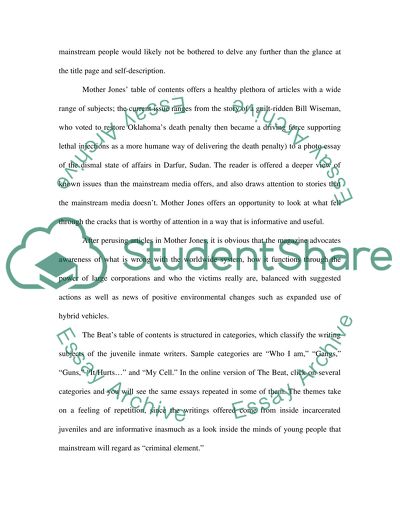Cite this document
(“Comparison of Mother Jones and The Beat Within Magazines Essay”, n.d.)
Retrieved from https://studentshare.org/literature/1502970-comparison-of-mother-jones-and-the-beat-within-magazines
Retrieved from https://studentshare.org/literature/1502970-comparison-of-mother-jones-and-the-beat-within-magazines
(Comparison of Mother Jones and The Beat Within Magazines Essay)
https://studentshare.org/literature/1502970-comparison-of-mother-jones-and-the-beat-within-magazines.
https://studentshare.org/literature/1502970-comparison-of-mother-jones-and-the-beat-within-magazines.
“Comparison of Mother Jones and The Beat Within Magazines Essay”, n.d. https://studentshare.org/literature/1502970-comparison-of-mother-jones-and-the-beat-within-magazines.


